Fastening of sewer pipes to the wall
In a private house or apartment is always a lot of different communications. But each pipe or wire must be securely fixed in its place, otherwise everything can quickly fail. The same statement applies to the sewer system. The pipes must be fixed, otherwise they will move and out of the connecting fittings. How to install sewer pipes to the wall and will be discussed in this article.
Types of fasteners
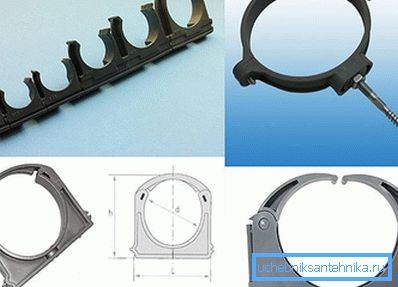
The sewer pipe itself is attached with hose clamps. Such devices provide fixation due to girth. Clamps are equipped with additional fasteners for placement on the wall (or other surface). These devices include:
- various screws;
- dowel;
- anchor fixtures.
Clamps themselves can be made of metal or plastic. Both species are quite common and have similar characteristics in their strength, durability and ease of installation.
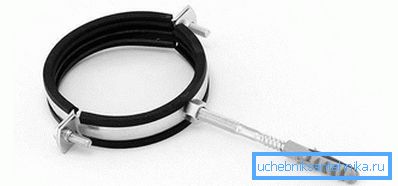
The choice of metal or plastic depends more on your personal preferences and the need to have a beautiful appearance in the room. Metal clamps are not as "elegant" as their plastic counterparts. Such devices are more suitable for fastening sewer pipes in the basement or utility rooms.

Plastic clamps are used when laying communications in residential premises. Thanks to a neat and attractive appearance, such devices look more aesthetically pleasing. In addition, plastic clamps have no problems with corrosion. Of course, modern metal products have reliable protection, but, nevertheless, it is better not to put them in places with high humidity.
Tip! When choosing a clamp it is worth paying attention to the method of fixation. There are options that provide a rigid or floating mount. In principle, the first type of clamp can also provide floating fixation, it is enough just not to twist them to the end.
Why do we need such varieties? The fact is that during thermal deformation of pipes they can be damaged by strong “hugs” of the clamp. To prevent this from happening, a floating mount is created. In this case, the pipe will be free (of course, relatively free) to move in the clamp, and therefore, the risk of damage is reduced.
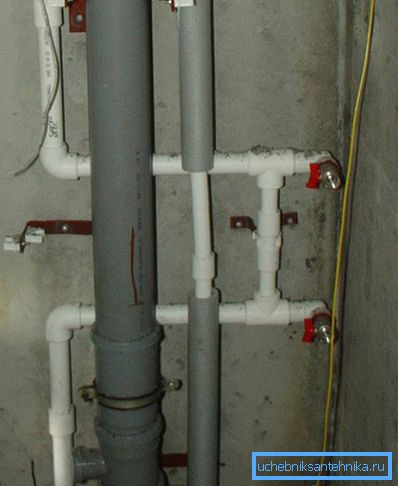
Clamps for floating fixing are more popular. Such devices are easy to use. It is enough to fix the clamp on the wall and with a little effort to place a pipe into it. The fixture snaps in and the communications are securely secured in place.
Tip! According to the recommendations of specialists, fixed fasteners are used in heated premises. In this case, the temperature drops will be minimal, which means that the pipes will not be subject to expansion. When laying communications in unheated premises it is better to use clamps with floating fixation.
Clamps themselves can be placed on supports. Such extras will keep communications at the right distance from the surface. This method is particularly relevant when installing sewers.
Recommendations for the work
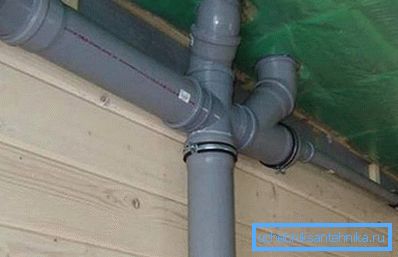
Now it is worth talking about how to fix sewer pipes to the wall with hose clamps. The installation process itself will not be so difficult. Virtually anyone can handle it effortlessly.
The sewage system is a rather complicated “organism”. It is subjected to various loads during its operation. In order for the sewage system to work properly and serve as long as possible, when installing and fixing it, you should strictly follow the rules.
Here are some of the most relevant requirements that need to be followed:
- The very first thing you should pay attention to is the attachment points. You should not fix the sewer pipes to the wall where you are comfortable. Clamps need to be placed in certain places in order to, as reliably as possible, to maintain communication. As a rule, the mount is installed in places of bends, pipe joints, branching, etc. Also clamps need to be put on long straight sections. In order to better calculate the attachment points, it is worthwhile to make a detailed diagram of all communications.
- When attaching the sewer pipe to the wall should not forget about the slope. It should be at least 20 mm for each running meter of communications. In this case, the slope is made in the direction of the sewer riser. When attaching the clamps, you should properly mark everything, it is better to do this with the level.
- Do not use only one type of fasteners - hard or floating. As a rule, a rigid fixation is established at the joints and at the very beginning of the pipe. Next, you need to install floating fasteners. This will allow you to secure sewer pipes, and at the same time will not allow them to break from the expansion during heating.
- It is necessary to maintain the distance between the fasteners. Everything will depend on the pipes used. If the sewer is made of PVC, a lighter material, the clamps are mounted at a distance of at least 2 meters between each other. When laying communications from metal pipes, the distance is reduced to one and a half or one meters.
- It is very important to secure the clamp in place. Sewage pipes during operation withstand high mechanical loads. Shocks, vibrations and other “troubles” are transmitted to the fasteners. Therefore, the clamps, or rather the anchors and dowels, must be securely held in their places. In drawing up the scheme of laying the sewer system, you should first check the strength and reliability of the walls. Anchors and plugs should not be allowed to be driven into a crumbling and splitting base.
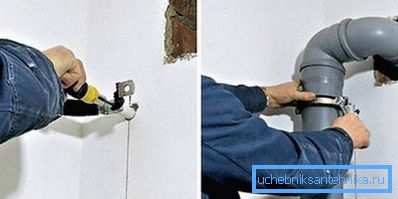
The process of fixing sewer pipes to the wall is quite simple. In pre-marked locations mount your chosen clamps. Next, check their reliability and fix the pipes themselves. If the clamps are of the floating type, then the pipes simply snap into them. When choosing a fixing device with a rigid fixation, you will have to tighten the bolt or nut (depending on the chosen construction of the clamp), which will fix the communication in its place.
If you want to hide the sewer pipes as carefully as possible, then you should make a niche in the wall. This method will require the use of additional equipment, and in order to perform it carefully, you will need certain skills. But as a result, your communications will not spoil the overall look of the room. The niches themselves can be closed with false walls or drywall.
Also read:
- How to connect sewer pipes.
- Types of fittings for sewage.
- Forced sewage in the apartment.
- How to crash into the sewer riser.
Video
Watch an animated video on how to install the clamp and fix the pipe: